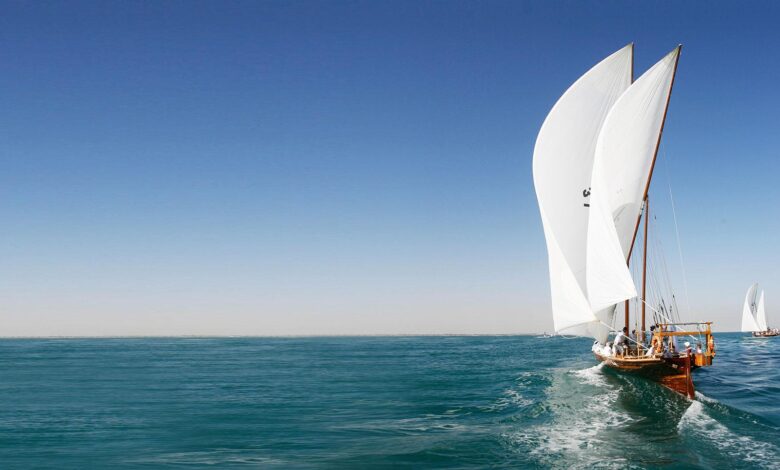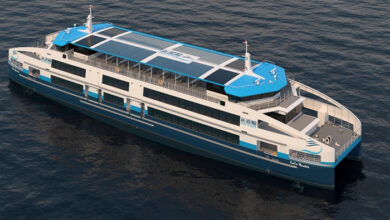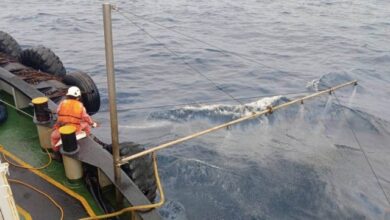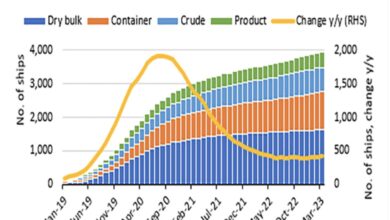
In a new report, The Economist Intelligence Unit examines the past, present and future of energy innovation for the blue economy. The report looks at the energy needs of different ocean economy sectors, assesses groundbreaking innovations and outlines an enabling environment for energy innovation within the blue economy. Based on three case studies and in-depth interviews with 30 energy and blue economy experts, this report provides valuable insights for all stakeholders working to develop new, clean solutions for the blue economy and beyond.
What is the demand for energy within the blue economy? What enablers have driven past innovations, and what were the impacts? What is the current state of marine energy innovation?
As the blue economy continues to grow, energy needs will continue to rise. At the same time, as new energy innovations emerge the potential of the blue economy to create both sustainable value and jobs can be realised through the expansion and transformation of existing markets as well as the creation of new ones.
In this report The Economist Intelligence Unit examines the past, present and future of energy innovation within the blue economy. The study was supported by funding from the Pacific Northwest National Laboratory (PNNL). The report looks at the energy needs of different ocean economy sectors to see where demand exists and may be growing.
We assess groundbreaking energy innovations to date—the sail-to-steam transition, improved energy storage mechanisms and the development of offshore wind—to better understand their initial and ongoing effects on blue economy markets. We use insights gleaned from these case studies alongside in-depth interviews with blue economy, energy innovation and marine energy experts to determine the central elements needed to create an enabling environment for innovation within the ocean economy.
This report provides valuable insights for all stakeholders working to develop new, clean solutions to serve the growing energy needs of the blue economy, particularly marine energy technologies. The report sheds light on enabling factors that can accelerate energy innovation for the blue economy and unlock the promise of marine energy.
Through improvement of the enabling environment marine energy technologies can be driven forward, transforming and expanding the blue economy in the process. The report is divided into five chapters.
In chapter one, we briefly outline the central sectors of the blue economy—both emerging and established—and identify the main energy consumers. The ocean economy is an important part of both the US and global economy: maritime transport is the largest consumer of energy in the blue economy and a large contributor to global CO2 emissions.
As such, the sector is now pushing towards cleaner energy usage. Maritime tourism is the largest ocean-based industry in terms of GDP contribution and employment in the US and is a major consumer of energy. Ship and boat building and the offshore oil and gas industries are also major consumers of energy within the US. Within all of these sectors, including fishing and aquaculture and ocean observation and navigation, marine energy presents opportunities for renewable, in-situ or local power generation that could help pave the way towards the blue economy of the future.
The sail-to-steam transition and lessons for energy innovation
In chapter two, we examine the sail-to-steam transition. Steamships were central to a revolution in global trade and migration in the late 1800s and early 1900s. Nearly a hundred years passed between the first voyage of a commercial steamship in 1807 and the completion of the transition from sailboats to steamships.
Paddlewheel as a propulsion
Setting on the paddlewheel as a propulsion system facilitated the earliest commercial steamships while subsequent innovations, particularly screw-driven propulsion and the marinisation of the compound engine, drove increasing diffusion. Steamships gained traction through a series of increasingly large pathway markets while policy support, financing and insurance and complementary infrastructure (among other factors we discuss) were integral to the scaling-up and long-term success of steamships.
While wind propulsion went out of fashion with the rise of steamships (which were part of a global transition towards fossil fuel energy sources), new methods of harnessing wind for ocean transport are now burgeoning.
Energy storage and the blue economy
Energy storage, especially batteries, is the theme of chapter three. New economic and political attention towards alternative energy paradigms drove a wave of battery innovations during the 1970s. The lithium-ion (Li-ion) battery has become the most prominent of these and now serves as the backbone of the electronics, electric vehicle (EV) and utility storage markets. In the blue economy, energy storage—especially the higher energy density offered by Li-ion batteries—powers ocean observation and research.
This observation and research produces fundamental knowledge that enables all blue economy sectors to grow. Furthermore, the battery-driven autonomous underwater vehicle (AUV) market is rapidly growing while the electric boat market is poised to expand in the near future. Time, collaboration, pathway markets and marinisation (adapting technology for use in marine environments) were all central to the development of new battery technologies. Yet batteries still have major limitations for blue economy usage that new innovations—like improved in-situ power generation—could help to overcome.
The offshore wind boom
Chapter four examines the rise of offshore wind. Despite being a relatively new source of energy, offshore wind is now one of the fastest-growing renewable energy sources in the world and will expand massively in terms of value and power generation by 2040. This growth has been fuelled by the advancement of all aspects of offshore wind farms, but especially larger, more advanced turbines and improved foundations. The emergence of new materials led to improved turbines while lessons from the oil and gas industry allowed for better foundations and improved siting further offshore and in deeper waters.
While the market size has increased, prices for offshore wind power have rapidly declined and the industry is now creating a large number of jobs and becoming a major player in its own right. Offshore wind is one promising option for green hydrogen production which could enable a near carbon-neutral energy system.
Though a number of factors drove the development of the offshore wind industry, marinisation of pre-existing onshore wind technology and specific government policy support are two critical elements of its success. Offshore wind shows us that with proper government and societal incentives and an eye towards leveraging existing technologies, other offshore technologies may have a path towards success.
[doc id=40622]Energy innovation for the blue economy
Finally, chapter five ties the lessons of the case studies and interviews together to identify resource mobilisation—particularly of time—as key for energy innovation in the blue economy. It then outlines eight elements of the enabling environment that can increase the likelihood of successful innovation and reduce the need for the two key ingredients. The chapter details the state and relevance of each element generally, as well as for marine energy specifically, a set of technologies that hold particular promise for the blue economy. These eight elements, ordered broadly by the technology readiness levels (TRLs) they correspond to, are:
-
marinisation, technology transfer and collaboration;
-
policy support;
-
financing environment;
-
enabling and complementary technologies;
-
public awareness, attitudes, and social acceptance;
-
pathway markets, competition and economies of scale;
-
testing, standards and certification; and
-
complementary infrastructure.
THE ECONOMIST INTELLIGENCE













